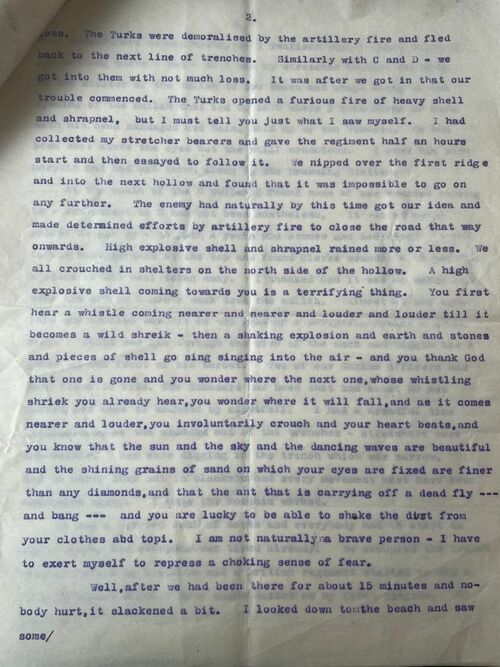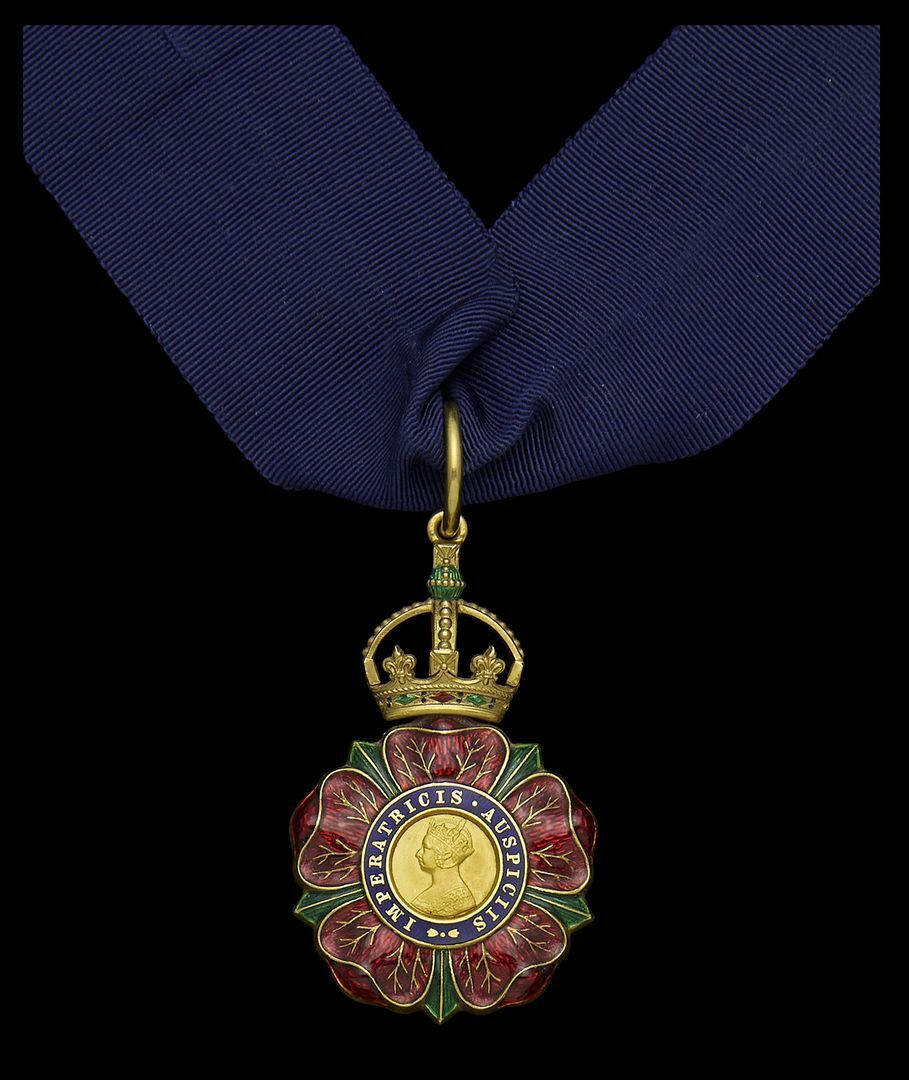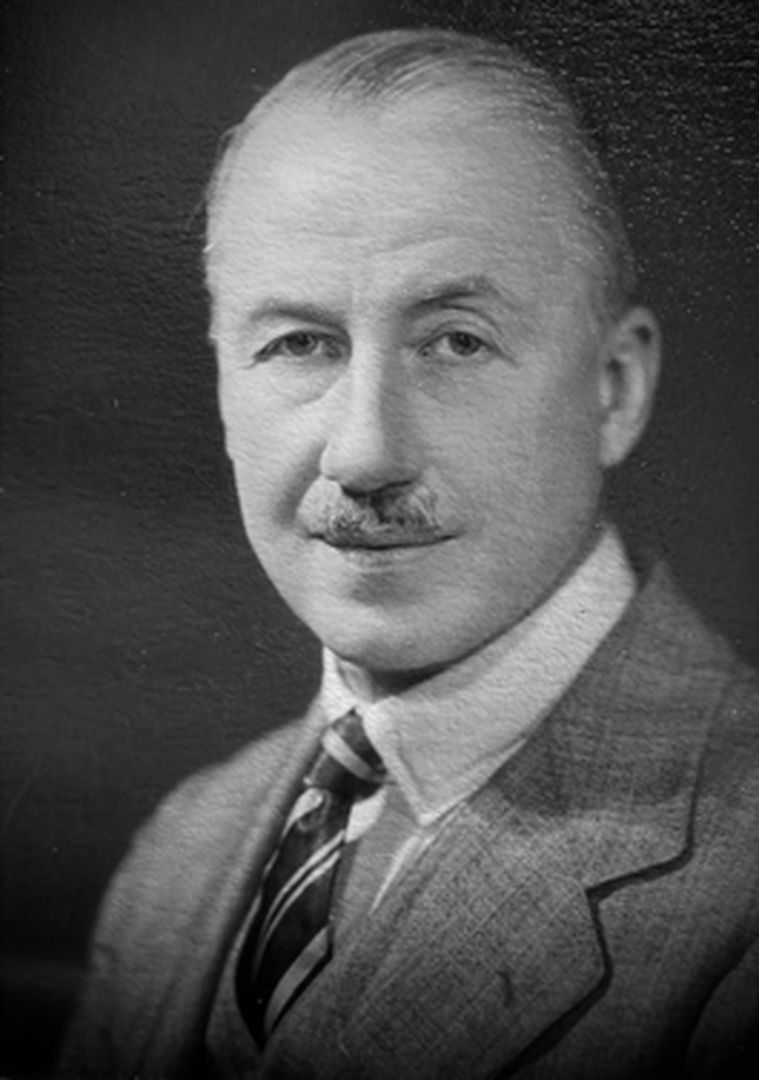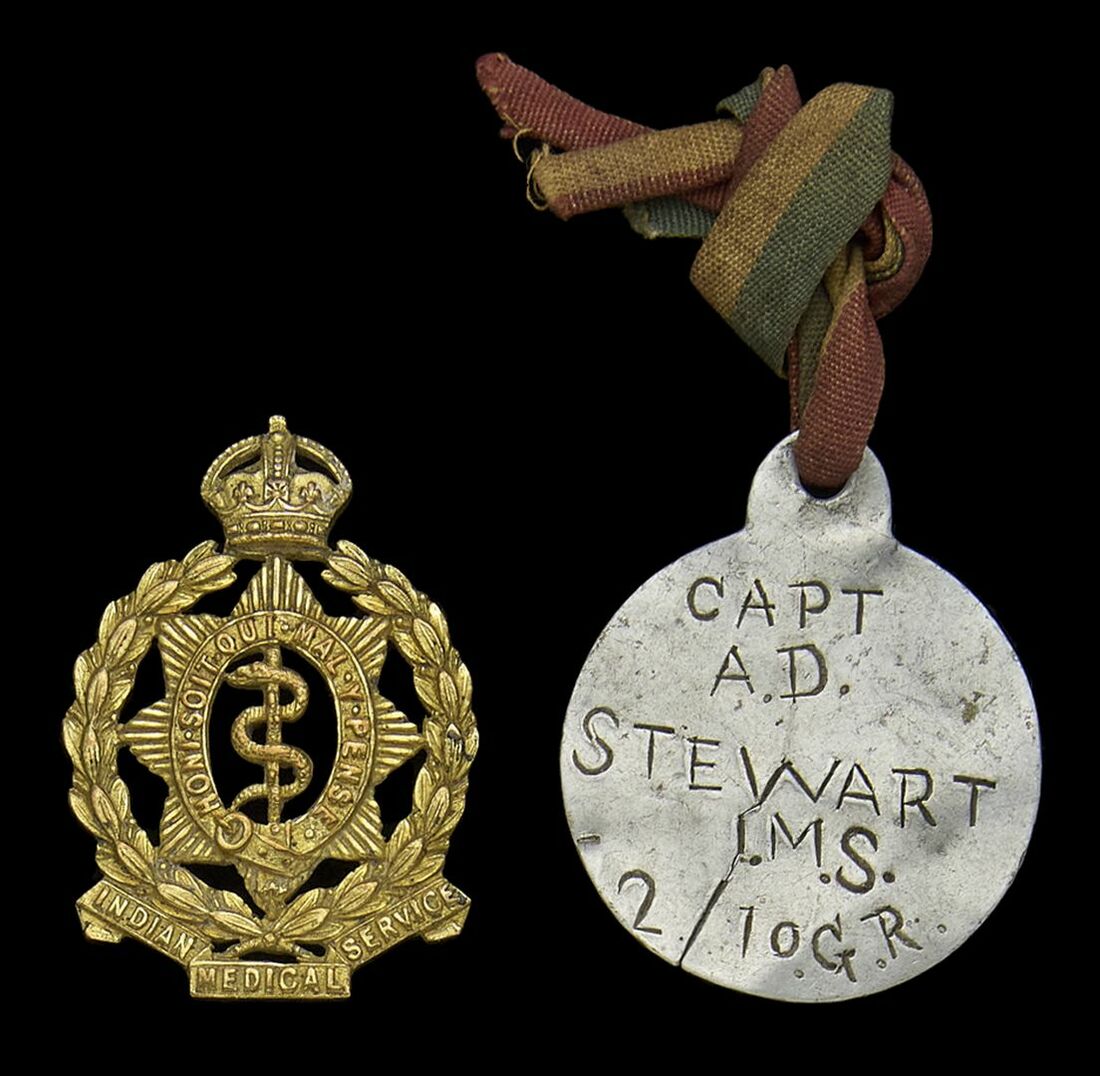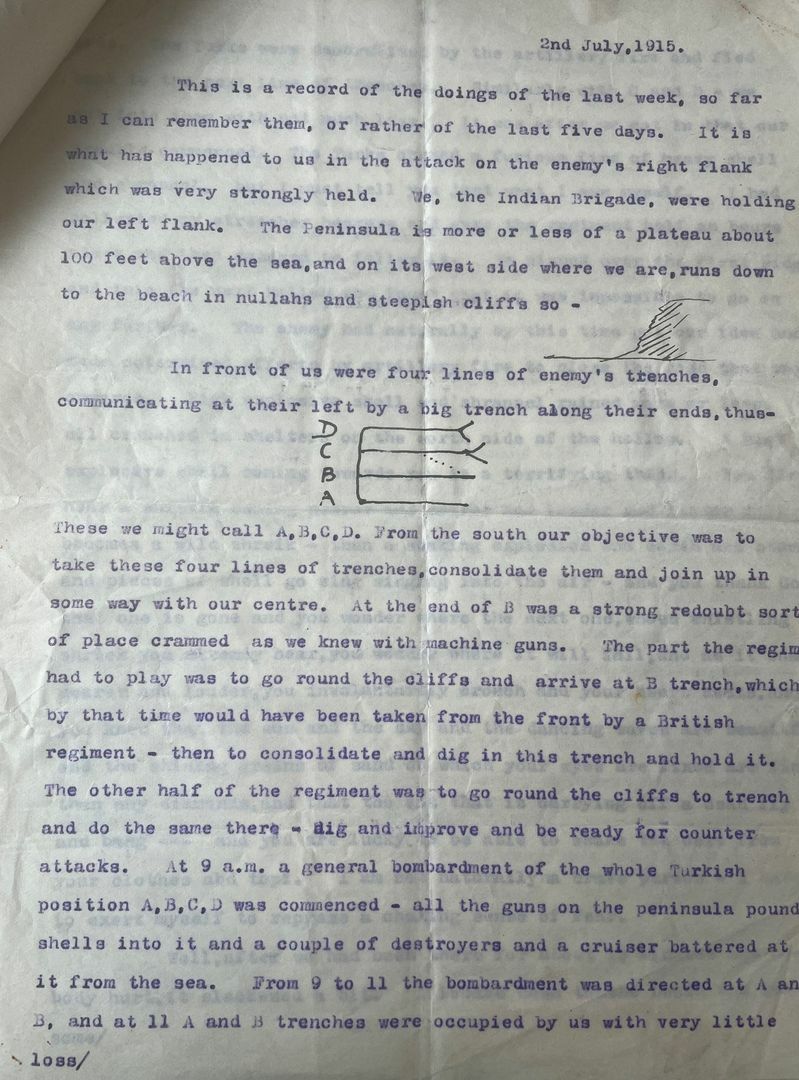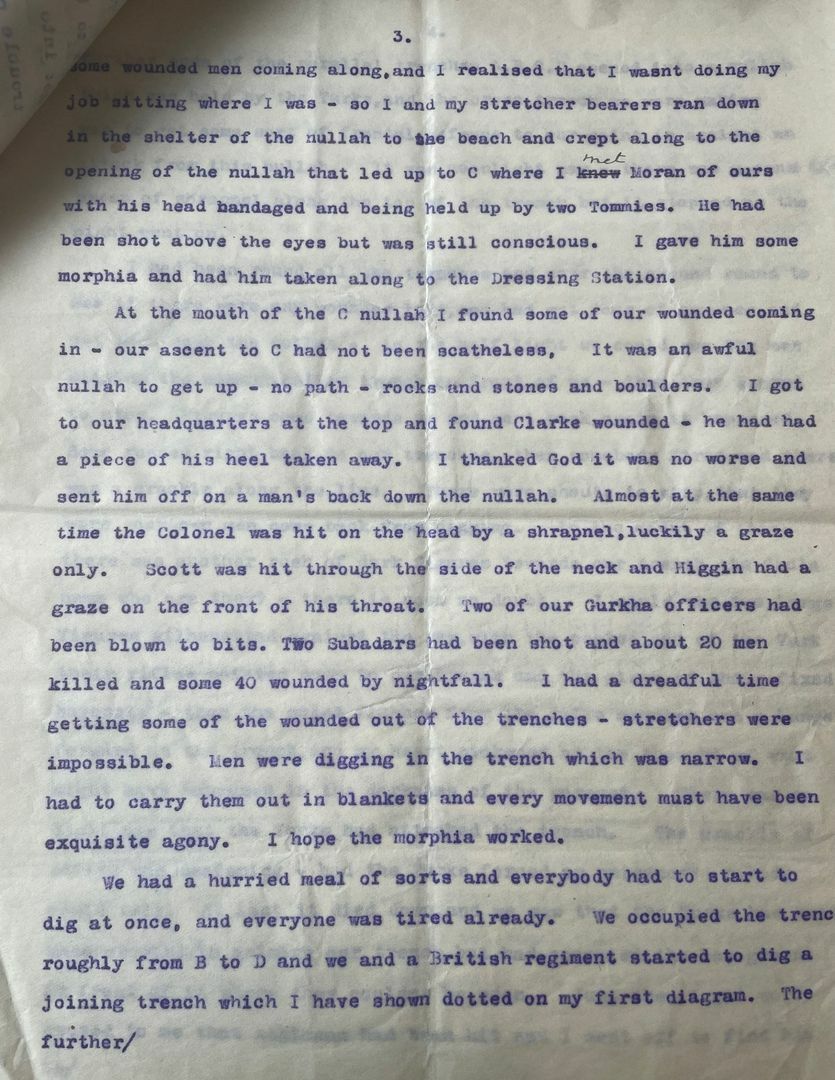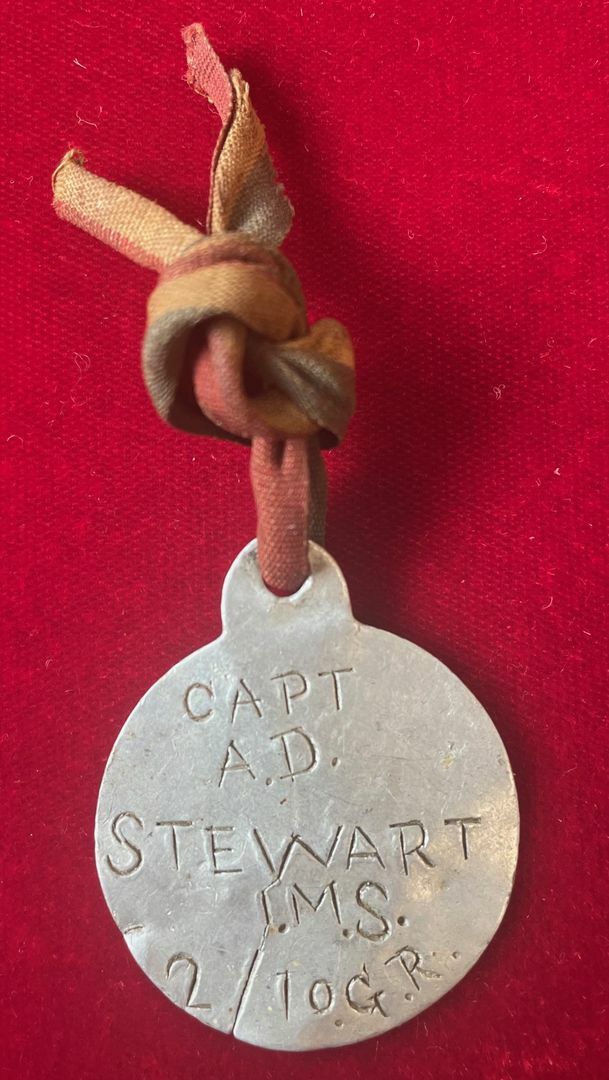Auction: 24001 - Orders, Decorations and Medals
Lot: 148
Sold by Order of a Direct Descendant
'A high explosive shell coming towards you is a terrifying thing. You first hear a whistle coming nearer and nearer and louder and louder till it becomes a wild shriek - then a shaking explosion and earth and stones and pieces of shell go sing singing in the air - and you thank God that one is gone and you wonder where the next one, whose whistling shriek you already hear, you wonder where it will fall, and as it comes nearer and louder, you involuntarily crouch and your heart beats, and you know that the sun and the sky and the dancing waves are beautiful and the shining grains of sand on which your eyes are fixed are finer than any diamonds, and that the ant that is carrying off a dead fly - and BANG - and you are lucky to be able to shake off the dirt from your clothes and topi. I am not naturally a brave person - I had to exert myself to repress a choking sense of fear...
Two of our Gurkha Officers had been blown to bits. Two Subadars had been shot and about 20 men killed and 40 wounded by nightfall. I had a dreadful time getting some of the wounded out of the trenches - stretchers were impossible. Men were digging in the trench which was narrow. I had to carry them out in blankets and every movement must have been exquisite agony. I hope the morphia worked.'
Stewart with his Gurkhas on Gallipoli face the enemy barrage.
The C.I.E. group of seven awarded to Lieutenant-Colonel A. D. Stewart, Indian Medical Service, a gallant Scot who served on Gallipoli with the 2/10th (Princess Mary's Own) Gurkha Rifles and left an unpublished account of the costly Battle of Gully Ravine
Stewart went on to have a highly distinguished medical career in India, where he was joint-founder of the Indian National Science Academy, before returning home to take up the post as Superintendent of the Edinburgh Royal Infirmary from 1935-48
The Most Eminent Order of the Indian Empire, C.I.E., Companion’s 3rd Type neck Badge, gold and enamel, in Garrard & Co. case of issue; The Most Venerable Order of St John of Jerusalem, Serving Brother's Badge, silver; 1914-15 Star (Capt. A. D. Stewart., I.M.S.); British War and Victory Medals (Capt. A. D. Stewart.), BWM with area of erasure after naming; Delhi Durbar 1911; Jubilee 1935, mounted court-style as worn where applicable, good very fine (7)
C.I.E. London Gazette 1 January 1934 (Director, All-India, Institute of Hygiene and Public Health, Calcutta, Bengal).
Alexander Dron Stewart was born at Blairgowrie on 22 June 1883 and having been educated at the High School of Dundee went to the capital and qualified with 1st Class Honours from Edinburgh University in 1906, passing into the Indian Medical Service during that same year. Before the outbreak of the Great War he took leave from his military service to gain further qualifications. These were to prove worthwhile in what was to come.
Landed with the Indian Brigade on Gallipoli, he served as Medical Officer to the 2/10th Gurkha Rifles. A period typed extract from a letter home, penned on 2 July 1915 gives further details:
'This is a record of the doings of the last week, so far as I can remember them, or rather of the last five days. It is what has happened to us in the attack on the enemy's right flank which was very strongly held. We, the Indian Brigade, were holding our left flank. The Peninsula is more or less of a plateau about 100 feet above the sea, and on its west side where we are, runs down to the beach in nullahs and steepish cliffs.
In front of us were four lines of enemy trenches, communicating at their left by a big trench along their ends...
The Turks opened a furious fire of heavy shell and shrapnel, but I must tell you just what I saw myself. I had collected my stretcher bearers and gave the Regiment half an hours start and then essayed to follow it. We nipped over the first ridge and into the next hollow and found it was impossible to go on any further...High explosive shell and shrapnel rained more or less. We all crouched in shelters on the north side of the hollow. A high explosive shell coming towards you is a terrifying thing. You first hear a whistle coming nearer and nearer and louder and louder till it becomes a wild shreik - then a shaking explosion and earth and stones and pieces of shell go sing singing in the air - and you thank God that one is gone and you wonder where the next one, whose whistling shriek you already hear, you wonder where it will fall, and as it comes nearer and louder, you involuntarily crouch and your heart beats, and you know that the sun and the sky and the dancing waves are beautiful and the shining grains of sand on which your eyes are fixed are finer than any diamonds, and that the ant that is carrying off a dead fly - and BANG - and you are lucky to be able to shake off the dirt from your clothes and topi. I am not naturally a brave person - I had to exert myself to repress a choking sense of fear.
Well, after we had been there for about 15 minutes and nobody hurt, it slackened a bit. I looked down to the beach and saw some wounded men coming along, and I realised that I wasn't doing my job sitting where I was - so I and my stretcher bearers ran down to the beach and crept along to the opening of a nullah that led up to C where I met Moran of ours with his head bandaged and being held up by two Tommies. He had been shot above the eyes but was still conscious. I gave him some morphia and had him taken along to the Dressing Station.
At the mouth of C nullah I found some of our wounded coming in...I got to our HQ at the top and found Clarke wounded - he had had a piece of his heel taken away. I thanked God that it was no worse and sent him off on a man's back down the nullah. Almost at the same time the Colonel was hit on the head by a shrapnel, luckily a grave only. Scott was hit through the side of the neck and Higgin had a graze on the front of his throat. Two of our Gurkha Officers had been blown to bits. Two Subadars had been shot and about 20 men killed and 40 wounded by nightfall. I had a dreadful time getting some of the wounded out of the trenches - stretchers were impossible. Men were digging in the trench which was narrow. I had to carry them out in blankets and every movement must have been exquisite agony. I hope the morphia worked.'
Stewart and his comrades dug in for the night on the nullah, a full moon lighting their every move. Then sheer terror broke out as the Turks worked around and behind their lines. Shots rang out and Stewart was called to attend the scene:
'...I found a wounded boy of ours. He told me he had been hit by a bomb which somebody had thrown from behind our trench, between us and the sea, and that somebody from behind too had shot the Adjutant Sahib. I passed word down to the bearers to come up for this case and went on to look for [Captain William Noel] Atkinson. It never occurred to me that he might be dead, but a few yards further on I came on a huddled figure, whose easeful position betokened only death. I straightened him out and looked. He must have died at once, thank God, and he had been shot from behind.
I got up and looked over the back of the trench towards the sea and I shall never forget what I saw there. There were some bushes about 10 yards away and the moon behind lit everything up. Between two of the bushed there was a face - devilishly malevolent it seemed to me in the ghastly moonlight - and there was a hand too and the hand was toying with something in its grasp. I stood petrified for an instance, and shouted to the men in the trench who were looking out front in the other direction to scatter, and the face and hand disappeared. I went along to [Captain James Lawrence] Higgin and he sent out some scouts over the ground, but they could find no one. We got the man later, and he paid his penalty.'
There was still no rest, Stewart was required to evacuate the wounded down to the Field Ambulance Dressing Station, constantly crossing shell-swept ground. At around 0200hrs the enemy put in a counter at the head of Nullah C and Captain Higgin & Campbell went to repel it with their men. Higgin was not to return and Campbell was wounded as Stewart recalls:
'...Campbell came back for some food. Some part of a bomb had got him in the face, in the cheek and nose and ear. A piece of stone or something had gone in through his nose and broken up his septum. After he was cleaned and dressed however he was back again with Russell...
The night time was a repetition of the one before. Russell and Campbell were set off to retake the old piece of trench, and Russell is dead now. The news came that both were dead - oh, it was too cruel - for a minute or two I couldn't stick it out. However, I simply had to recover myself quickly. An hour later they told me Campbell was still perfectly all right but that Russell had been hit through the head while leading his men up a little bluff. A good chap Russell, quiet and retiring and with no special social abilities, but with a quiet dry humour that only lit occasionally. We shall miss him, those of us who are left...I sent some very bad cases down to the Ambulance today awful wounds of the head from bombs. Some of them I wished would die in front of me. One poor boy with the side of his head blown away and his brain exposed. He was just crying quietly and moaning.'
Having served the Gurkhas with great distinction on Gallipoli, Stewart further see action in Salonika and in Mesopotamia.
Returned to his service in India, he forged ahead with his distinguished career and was variously Professor of Hygiene at Calcutta School of Tropical Medicine and thence took up the baton to found the Indian National Science Academy. Returned to Scotland in 1935, he headed the Edinburgh Royal Infirmary until 1948, which saw him at the helm throughout the Second World War. A Fellow of the Royal College of Physicians and the Royal Society of Edinburgh, he died in Edinburgh on 16 August 1969.
Sold together with the letter (8pp) covering the Gallipoli actions quoted at length, his metal identity tag, worn at Gallipoli, this named 'CAPT A. D. Stewart IMS 2/10GR', besides several photographs and a newspaper cutting from his obituary which featured in the British Medical Journal in September 1969.
For his miniature dress Medals, please see Lot 347.
Subject to 20% VAT on Buyer’s Premium. For more information please view Terms and Conditions for Buyers.
Sold for
£2,200
Starting price
£1200
Sale 24001 Notices
‘Now sold together with an additional Battle Report.’








